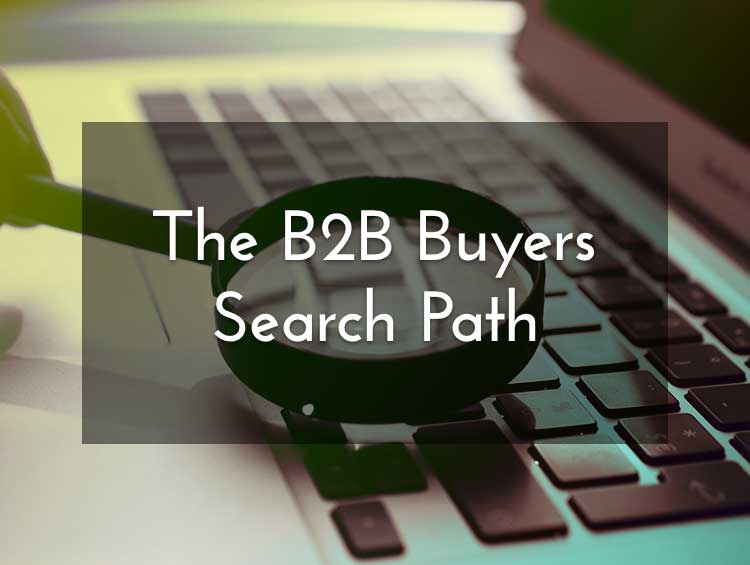A couple years ago, Google conducted major research that is extremely significant to the Business-to-Business industry. The Changing Face of B2B Marketing was published in March of 2015, but the information they compiled is still relevant. If anything, the data points are of greater impact today than they were a few years ago. The article covers 5 myths about B2B marketing, including one my favorite discussion items: the search path in the B2B buying process.
On average, a B2B buyer is conducting 12 searches before deciding to engage with the potential company. What do these 12 searches look like?
First, a generic search is taking place. Reflect for a moment on your own search habits. You have a challenge that you are currently facing – let’s say that for some reason your conveyor belts are tearing and slowing down your production line. As most people do, they go to Google and type in the pain they are experiencing.
Next, results and educational information are displayed, and the site visitor is learning more about the challenge and the available options that are posed in front of them. These options are:
- Try to resolve the situation themselves
- Outsource the solution
- Ignore the problem
Now, the searcher is looking at the pros and cons of the options that they have in front of them.
This additional research could include watching videos (educational and tutorial) and reading articles. If the decision is made to outsource the solution, then the search starts to identify what outsourcing options are available. The next step typically includes reaching out to an established network and researching firms online including auditing the reputation of the companies. The answers they are seeking include:
- Who else has this company worked with?
- Do they understand my industry?
- Have they solved this problem before?
After the visitor has completed their own research, the next step is finding out what others outside of their own network are saying about the companies/brands they are considering working with. This includes looking at reviews online on sites such as Google Reviews and the Better Business Bureau.
Finally, once the company has proved to be a resource, the prospective customer will engage with the brand by filling out a contact form or calling the phone number.
This is extremely important for you to be aware of the B2B buyer’s journey. It is your job as the solution to your customers’ problem to be present in all the search results. You want to position yourself as the thought leader and expert at all stages of the journey so that you stay top of mind through to the end of the buying process.

